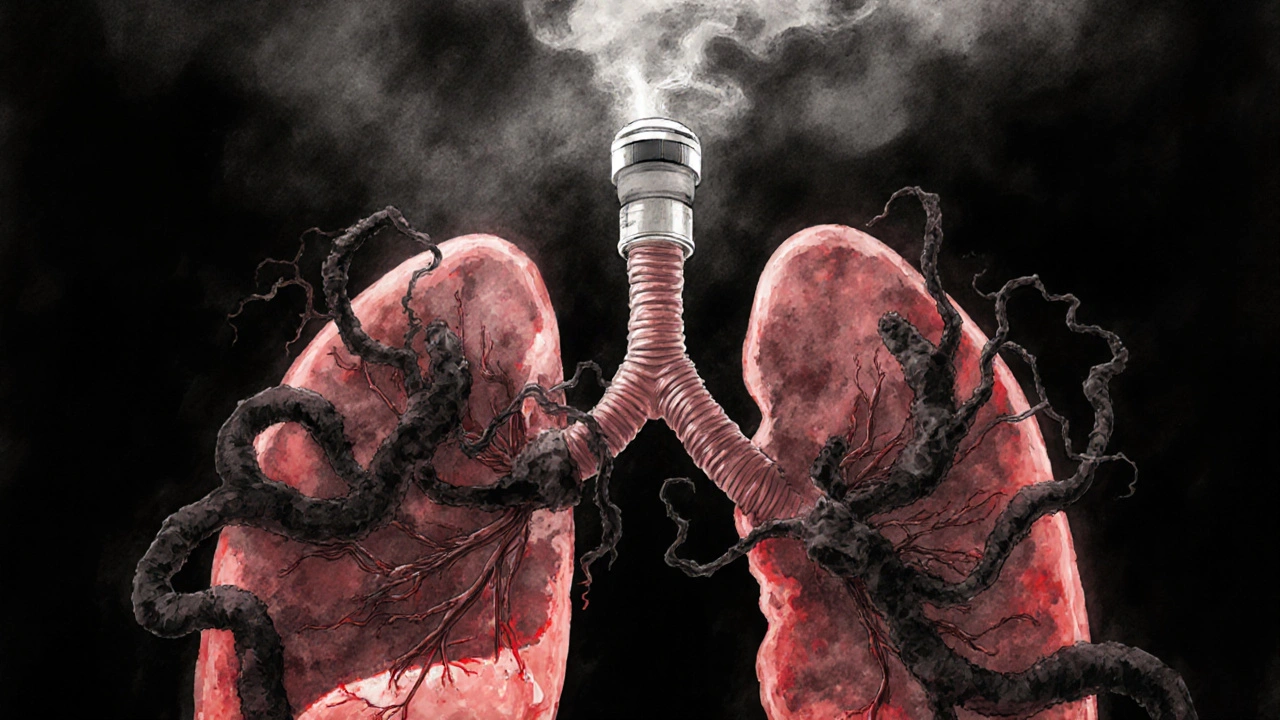Inhaled Corticosteroids: What They Are, How They Work, and What to Watch For
When you breathe in a medication to calm down angry airways, you're using an inhaled corticosteroids, a type of anti-inflammatory drug delivered directly to the lungs via inhaler. Also known as steroid inhalers, they’re not meant to stop an asthma attack right away—they’re the daily shield that keeps flare-ups from happening in the first place. Unlike oral steroids that flood your whole body, these go straight to where they’re needed: your lungs. That’s why they’re the go-to for long-term control of asthma and COPD, with far fewer side effects than pills or shots.
They work by quieting down the immune system’s overreaction in your airways. Think of it like turning down the volume on swelling and mucus production. You won’t feel an instant change, but after weeks of consistent use, breathing gets easier, nighttime coughing drops, and rescue inhalers aren’t needed as often. The most common ones include fluticasone, budesonide, mometasone, and beclomethasone. Each has slight differences in potency and delivery, but they all follow the same principle: local action, minimal system-wide impact.
But they’re not risk-free. A dry mouth or hoarse voice? Common. Thrush in the throat? Possible—rinse your mouth after each puff to prevent it. And while they’re safer than oral steroids, long-term use at high doses can still affect bone density or adrenal function, especially in kids. That’s why doctors start low and go slow. If you’re on one of these, you’re probably also using a rescue inhaler like albuterol. They’re not competitors—they’re teammates. One handles daily inflammation, the other handles emergencies.
Some people avoid these because they hear the word "steroid" and think bodybuilders or weight gain. That’s not what’s happening here. These aren’t the same as anabolic steroids. They’re closer to the natural hormones your body makes to manage stress and inflammation—but delivered in tiny, targeted doses. If you’ve tried other asthma meds and they didn’t work, or if you’re using your rescue inhaler more than twice a week, this is likely the next step your doctor will suggest.
What you’ll find in the posts below are real-world comparisons and warnings. You’ll see how fluorometholone, a corticosteroid used in eye drops for uveitis works differently than inhaled versions, and why mixing steroid types can be risky. You’ll read about Calcort (deflazacort), an oral steroid often compared to prednisone, and why switching from pills to inhalers can cut side effects. You’ll also find guides on drug interactions—like how goldenseal or grapefruit juice can mess with how your liver processes these meds. And you’ll learn why some people need alternatives like leukotriene modifiers or biologics when inhaled steroids alone aren’t enough.
This isn’t just a list of drugs. It’s a collection of real stories, warnings, and comparisons from people who’ve been there. Whether you’re just starting out or you’ve been on these inhalers for years, there’s something here that’ll help you use them smarter, safer, and more effectively.

How Beclomethasone Helps Manage Bronchitis Symptoms
Beclomethasone helps manage chronic bronchitis by reducing airway inflammation, decreasing flare-ups, and improving breathing over time. It’s not a quick fix but a long-term control medication used with proper inhaler technique.




